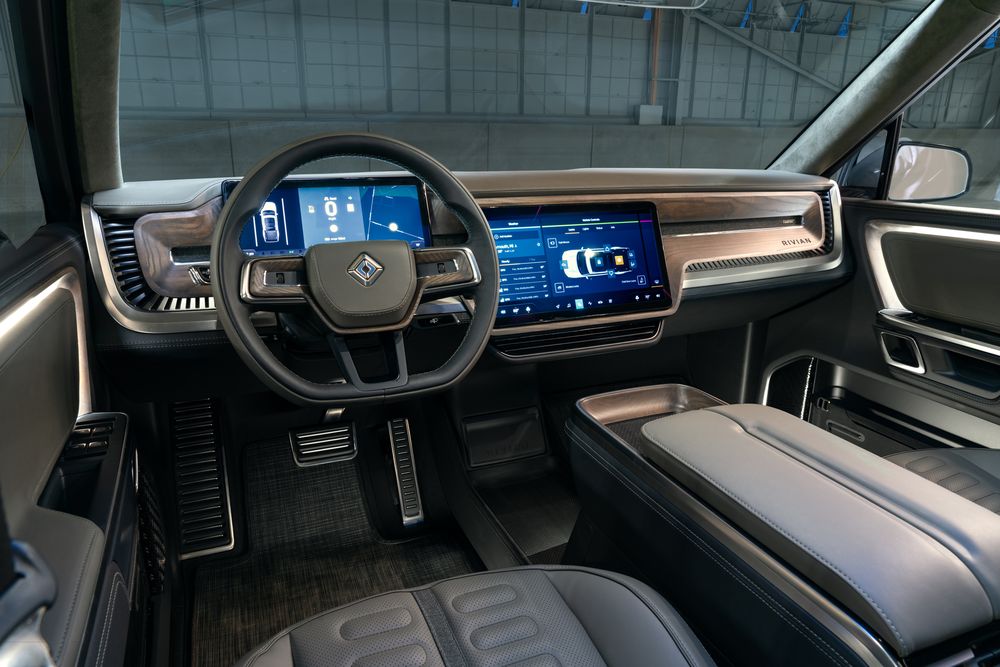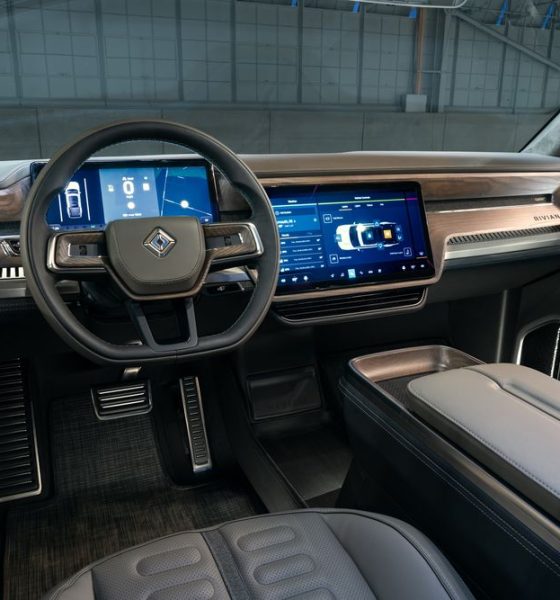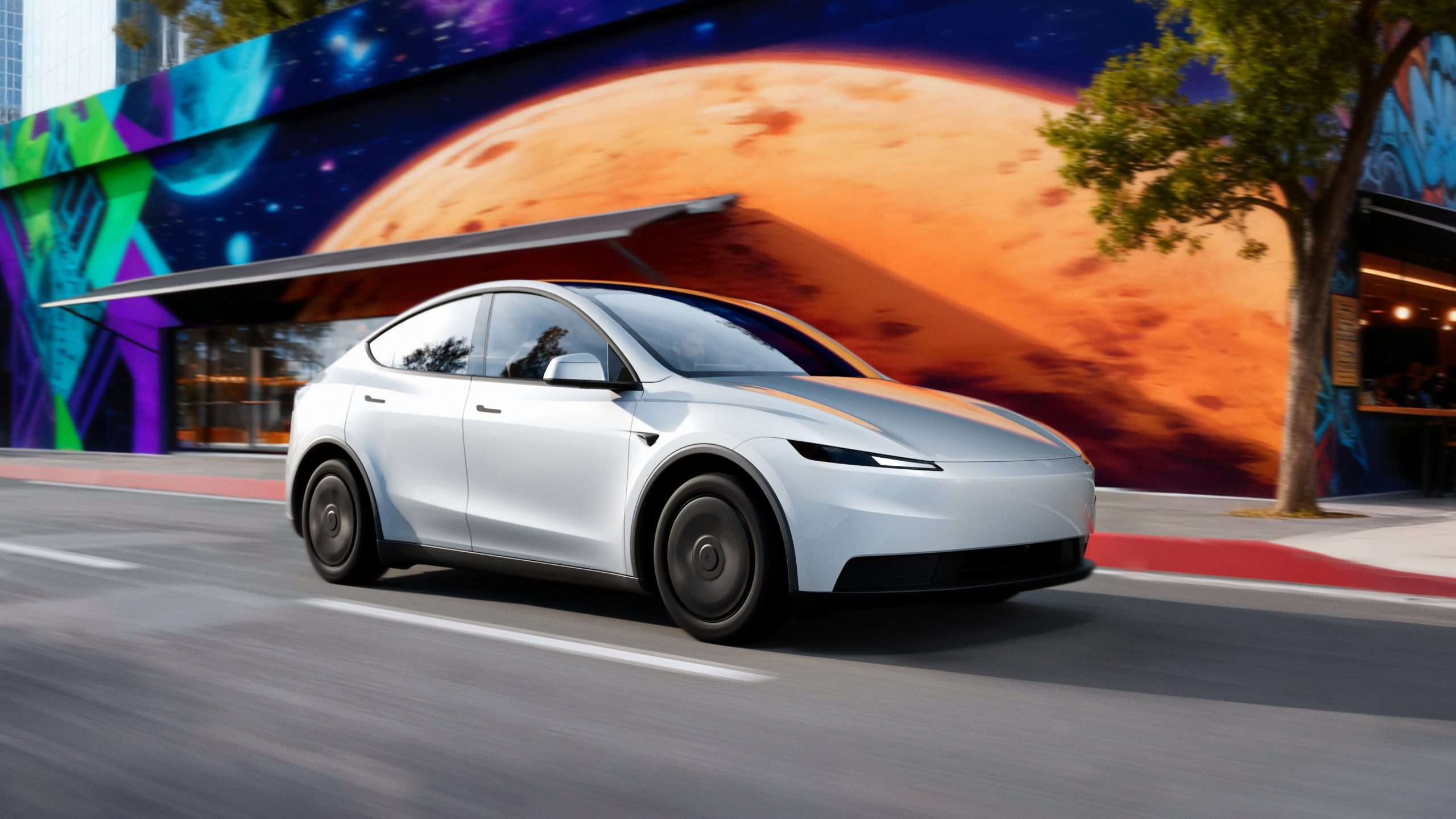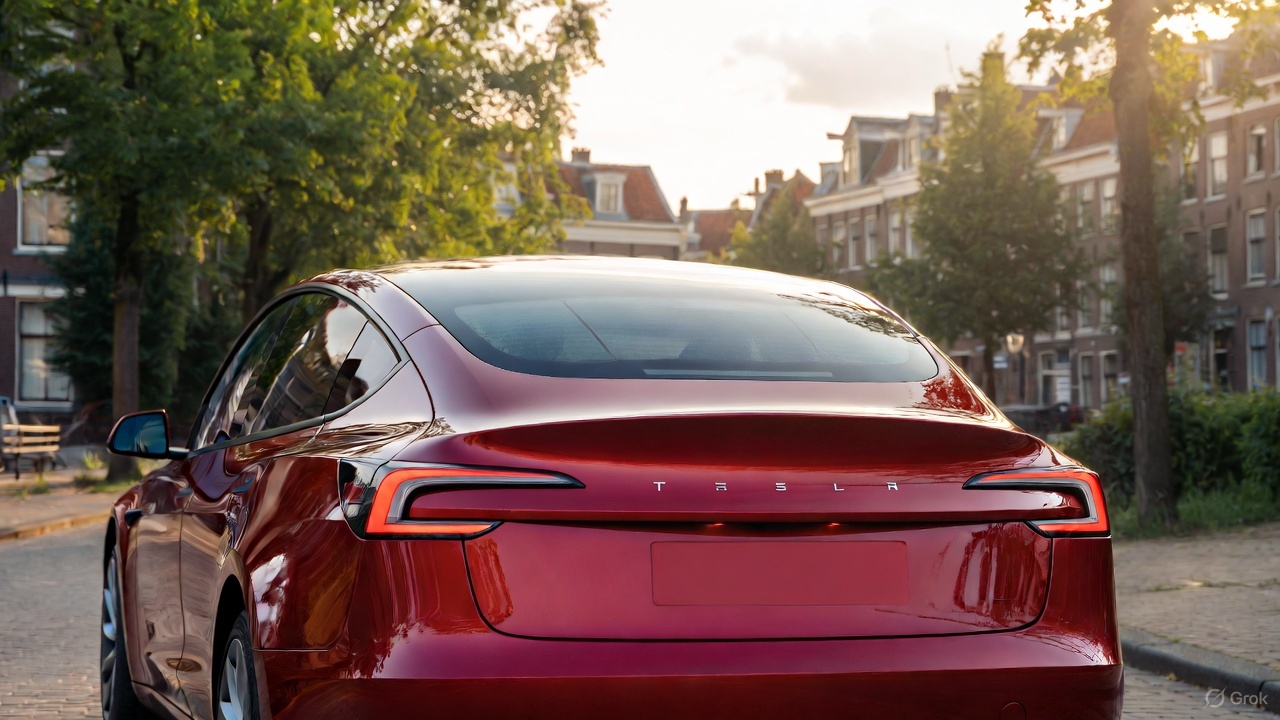

News
Rivian’s self-driving patent application hints at driver monitoring functionality
Rivian’s Associate Director of Self-Driving, Oliver Jeromin, discussed a driver monitoring system that’s part of the company’s full self-driving suite in a recent interview. Thanks to a recently published patent application by the all-electric carmaker, more details about how such a system would work are now available.
The patent application, titled “Occupant Awareness Monitoring for Autonomous Vehicles,” was published on July 25, 2019, under serial number US 2019/0225228. It describes a multi-part system wherein driver activity is interpreted through synced wireless devices either on a smartphone or directly with the vehicle itself. If a driver’s awareness is needed and determined not to be available, the vehicle will take remedial action to ensure a high level of safety.
The five levels of vehicle autonomy defined by the Society for Automotive Engineers (SAE) (and adopted by the U.S. National Highway Traffic Safety Administration) range from level 0 with no automation to level 5 with full automation. Levels 3-5 specifically require that their human driver (or passenger if Level 5) be ready to retake control of the vehicle or respond in some way under specific circumstances. That said, Rivian’s invention described in this application seeks to detect whether the necessary level of readiness is present in the driver.
- Rivian’s driver monitoring patent application. | Image: Rivian/USPTO
- Rivian’s driver monitoring patent application. | Image: Rivian/USPTO
“The present inventors have recognized the technological problem of a potential need for human intervention in connection with the operation of autonomous automotive vehicles featuring autonomy levels 3, 4, or 5, and have observed a need for a technological solution to monitor the awareness of vehicle occupants,” the application states in the background portion of the description.
The monitoring process is described to work as follows:
- Connect, by vehicle, to wireless device of vehicle occupant.
- Receive, by vehicle, signal from wireless device indicative of activity of the vehicle occupant and processing the signal to determine level of awareness of vehicle occupant.
- Determine whether level of awareness of vehicle occupant satisfies a threshold.
- Generate, by vehicle, alert based upon whether level of awareness of vehicle occupant satisfies threshold.
To accomplish these steps, Rivian proposes in the application to pair electronic devices that can track and provide driver data to the automated driving program, e.g., general smartphones or tablets, finesses trackers, and electronically connected medical devices. If a driver is watching a movie or has vital signs indicating sleep (breathing rate, pulse, etc.), the vehicle would know the driver is not ready to resume control if needed and respond appropriately.
Also described in the patent application are enforcement ideas such as a series of touch screen prompts requiring a response, and in the event of no response, the vehicle would pull over and stop. If an emergency situation were detected via the connected medical devices, the car would pull over and call 911. Along with a fitness tracker, other medical devices suggested for use in the application are glucose monitors, blood oxygen monitors, and breathalyzers.
Driver attentiveness while using self-driving features is already a problem under Level 2 programs where warning prompts are fairly strict about keeping eyes on the road. Tesla, for instance, regularly reminds its customers that Autopilot isn’t a full self-driving system yet and needs complete driver attention. However, as headlines and Tesla crash investigations have indicated, the warning isn’t always heeded.
Rivian’s driver monitoring system certainly sounds like a good step towards increasing safety measures as the carmaker continues to develop its product lines. The proposed syncing of medical devices might run into some resistance on privacy grounds, but the overall payoff that a safe self-driving experience will provide may find cause for compromise. Overall, it’s clear Rivian has safety as a priority as it prepares to enter the automotive arena with the R1T pickup truck and R1S SUV later next year.

Elon Musk
Tesla CEO Elon Musk sends rivals dire warning about Full Self-Driving

Tesla CEO Elon Musk revealed today on the social media platform X that legacy automakers, such as Ford, General Motors, and Stellantis, do not want to license the company’s Full Self-Driving suite, at least not without a long list of their own terms.
“I’ve tried to warn them and even offered to license Tesla FSD, but they don’t want it! Crazy,” Musk said on X. “When legacy auto does occasionally reach out, they tepidly discuss implementing FSD for a tiny program in 5 years with unworkable requirements for Tesla, so pointless.”
I’ve tried to warn them and even offered to license Tesla FSD, but they don’t want it! Crazy …
When legacy auto does occasionally reach out, they tepidly discuss implementing FSD for a tiny program in 5 years with unworkable requirements for Tesla, so pointless. 🤷♂️
🦕 🦕
— Elon Musk (@elonmusk) November 24, 2025
Musk made the remark in response to a note we wrote about earlier today from Melius Research, in which analyst Rob Wertheimer said, “Our point is not that Tesla is at risk, it’s that everybody else is,” in terms of autonomy and self-driving development.
Wertheimer believes there are hundreds of billions of dollars in value headed toward Tesla’s way because of its prowess with FSD.
A few years ago, Musk first remarked that Tesla was in early talks with one legacy automaker regarding licensing Full Self-Driving for its vehicles. Tesla never confirmed which company it was, but given Musk’s ongoing talks with Ford CEO Jim Farley at the time, it seemed the Detroit-based automaker was the likely suspect.
Tesla’s Elon Musk reiterates FSD licensing offer for other automakers
Ford has been perhaps the most aggressive legacy automaker in terms of its EV efforts, but it recently scaled back its electric offensive due to profitability issues and weak demand. It simply was not making enough vehicles, nor selling the volume needed to turn a profit.
Musk truly believes that many of the companies that turn their backs on FSD now will suffer in the future, especially considering the increased chance it could be a parallel to what has happened with EV efforts for many of these companies.
Unfortunately, they got started too late and are now playing catch-up with Tesla, XPeng, BYD, and the other dominating forces in EVs across the globe.
News
Tesla backtracks on strange Nav feature after numerous complaints

Tesla is backtracking on a strange adjustment it made to its in-car Navigation feature after numerous complaints from owners convinced the company to make a change.
Tesla’s in-car Navigation is catered to its vehicles, as it routes Supercharging stops and preps your vehicle for charging with preconditioning. It is also very intuitive, and features other things like weather radar and a detailed map outlining points of interest.
However, a recent change to the Navigation by Tesla did not go unnoticed, and owners were really upset about it.
For trips that required multiple Supercharger stops, Tesla decided to implement a naming change, which did not show the city or state of each charging stop. Instead, it just showed the business where the Supercharger was located, giving many owners an unwelcome surprise.
However, Tesla’s Director of Supercharging, Max de Zegher, admitted the update was a “big mistake on our end,” and made a change that rolled out within 24 hours:
The naming change should have happened at once, instead of in 2 sequential steps. That was a big miss on our end. We do listen to the community and we do course-correct fast. The accelerated fix rolled out last night. The Tesla App is updated and most in-car touchscreens should…
— Max (@MdeZegher) November 20, 2025
The lack of a name for the city where a Supercharging stop would be made caused some confusion for owners in the short term. Some drivers argued that it was more difficult to make stops at some familiar locations that were special to them. Others were not too keen on not knowing where they were going to be along their trip.
Tesla was quick to scramble to resolve this issue, and it did a great job of rolling it out in an expedited manner, as de Zegher said that most in-car touch screens would notice the fix within one day of the change being rolled out.
Additionally, there will be even more improvements in December, as Tesla plans to show the common name/amenity below the site name as well, which will give people a better idea of what to expect when they arrive at a Supercharger.
News
Dutch regulator RDW confirms Tesla FSD February 2026 target
The regulator emphasized that safety, not public pressure, will decide whether FSD receives authorization for use in Europe.

The Dutch vehicle authority RDW responded to Tesla’s recent updates about its efforts to bring Full Self-Driving (Supervised) in Europe, confirming that February 2026 remains the target month for Tesla to demonstrate regulatory compliance.
While acknowledging the tentative schedule with Tesla, the regulator emphasized that safety, not public pressure, will decide whether FSD receives authorization for use in Europe.
RDW confirms 2026 target, warns Feb 2026 timeline is not guaranteed
In its response, which was posted on its official website, the RDW clarified that it does not disclose details about ongoing manufacturer applications due to competitive sensitivity. However, the agency confirmed that both parties have agreed on a February 2026 window during which Tesla is expected to show that FSD (Supervised) can meet required safety and compliance standards. Whether Tesla can satisfy those conditions within the timeline “remains to be seen,” RDW added.
RDW also directly addressed Tesla’s social media request encouraging drivers to contact the regulator to express support. While thanking those who already reached out, RDW asked the public to stop contacting them, noting these messages burden customer-service resources and have no influence on the approval process.
“In the message on X, Tesla calls on Tesla drivers to thank the RDW and to express their enthusiasm about this planning to us by contacting us. We thank everyone who has already done so, and would like to ask everyone not to contact us about this. It takes up unnecessary time for our customer service. Moreover, this will have no influence on whether or not the planning is met,” the RDW wrote.
The RDW shares insights on EU approval requirements
The RDW further outlined how new technology enters the European market when no existing legislation directly covers it. Under EU Regulation 2018/858, a manufacturer may seek an exemption for unregulated features such as advanced driver assistance systems. The process requires a Member State, in this case the Netherlands, to submit a formal request to the European Commission on the manufacturer’s behalf.
Approval then moves to a committee vote. A majority in favor would grant EU-wide authorization, allowing the technology across all Member States. If the vote fails, the exemption is valid only within the Netherlands, and individual countries must decide whether to accept it independently.
Before any exemption request can be filed, Tesla must complete a comprehensive type-approval process with the RDW, including controlled on-road testing. Provided that FSD Supervised passes these regulatory evaluations, the exemption could be submitted for broader EU consideration.










